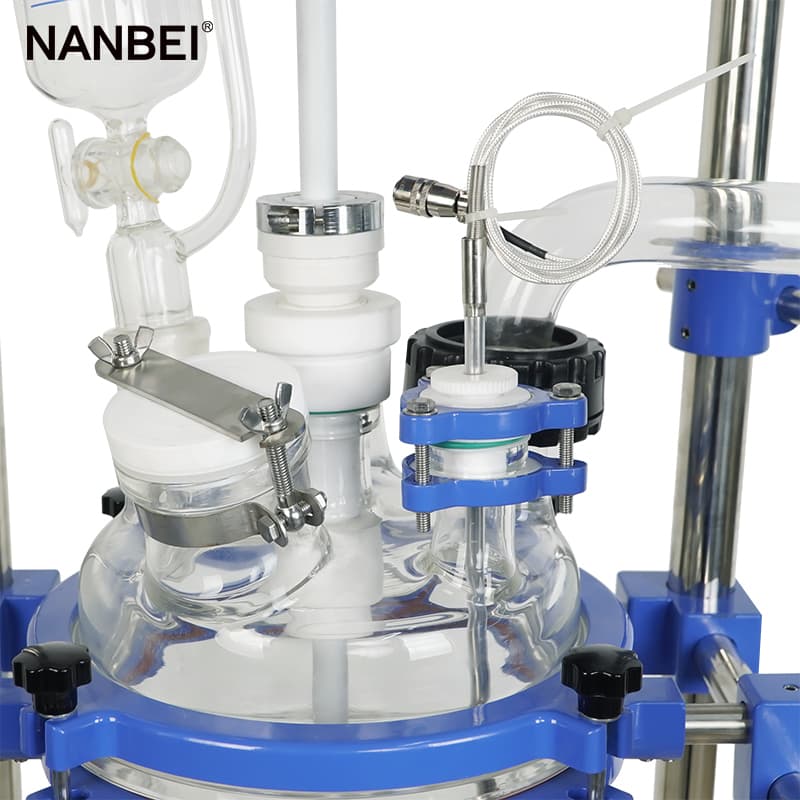
Technical Articles
NANBEI Is Professional On Providing One-step Solution Of Laboratory Instruments And Equipment
Glass reactors remain essential in synthetic chemistry, advanced material preparation, and pharmaceutical R&D due to their contamination-free operation, corrosion resistance, and rapid heating capabilities. However, selecting the optimal unit requires moving beyond superficial specifications.
1. The Glass Thickness Paradox
While thickness correlates with strength, laboratory reactors demand a trifecta of performance:
Impact resistance (thermal/mechanical shock)
Temperature tolerance (-80°C to 300°C)
Heat transfer efficiency
Per ISO 3585 standards, 6mm borosilicate glass (Type 3.3) achieves the ideal equilibrium.
Exceeding this thickness:
Reduces thermal conductivity by 17% (slowing reaction kinetics)

Increases thermal stress vulnerability by 35% (risk of microcracks)
*Case study: An 8mm reactor failed after three -70°C→150°C cycles in polymer synthesis.*
2. Critical Parameters Most Buyers Ignore
| Parameter | Key Consideration | Selection Error Consequence |
|---|---|---|
| Reaction volume | Max 70% of nominal capacity | Poor mixing / foam overflow |
| Glass material | Borosilicate 3.3 > Soda-lime (8x acid resistance) | Corrosion pitting |
| Stirring system | Anchor vs Impeller vs PTFE paddle | Failed high-viscosity mixing |
| Temperature range | Required heating/cooling rates | Reaction runaway |
| Frame material | 316L stainless > Aluminum | Chloride-induced corrosion |
3. Pre-Selection Checklist
Process Simulation
Test viscosity limits (e.g., 50,000cP silicones)
Validate extreme temperatures (e.g., -50°C cryo-reactions)
Confirm chemical compatibility (e.g., HF exposure)
Safety Thresholds
Pressure/vacuum certification (e.g., 0.5MPa rating)
Explosion-proof motor requirements
Scalability Reserve
Maintain 30% capacity buffer to accommodate:
Pilot-to-production scaling
Multi-step reactions
Industry Insight: For GMP-compliant applications, tri-clamp connections reduce contamination risks by 87% versus ground joints.